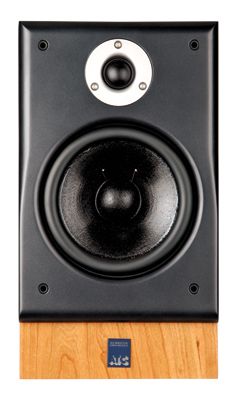Atc Scmii (£1036)

You know the deal when you buy an ATC, whatever its price tag. A flat frequency response and tight pair matching are assured together with low coloration and low distortion from ATC’s own meticulously designed drive units. Forget metal dome tweeters or metal-coned bass units – ATC prefers more traditional diaphragm materials, with doping applied to quell resonances. And in its smaller speakers it has always preferred closed box to reflex bass loading, in further rejection of fashion.
In all these respects the SCM11 is a chip off the old block. A knuckle-wrap test confirms the general solidity of its cabinet and you can feel the large motor assembly of the bass-mid driver in the speaker’s surprising weight (8.5kg each). A flat wire, edge-wound voice coil maximises the amount of copper in its magnet gap, and hence sensitivity, while an undercut pole linearises the flux. As the doping of the cone surface makes it slightly tacky, you may decide to leave the grille in place – at least when the speakers are not in use – in case they accumulate dust.
Just two finishes are available: the pictured cherry veneer or black ash, which costs a little more at £1094. With either you get a reassuring six year warranty.
NEUTRAL SOUND
Positive aspects of the ATC’s sound quality are its unimpeachable tonal neutrality and low coloration – which are plain as a pikestaff when comparisons are made to the Cabasse, for instance – and the low frequency cleanliness and control that accrue from its use of closed-box bass loading. It gave ‘Come Together’ a more solid foundation than any other in this group.
Ranged against this, though, is a distinct lack of luminosity – that’s the best word I can contrive to describe it – which I find makes the SCM11 a less than fully absorbing partner across the gamut of music.
On Scheherazade it was a mite reticent, not serving up quite the sense of acoustic or musical tension that the (almost as neutral) PSB did. With the Kodály cello piece – which thrives on unfettered microdynamics – the piano sound wasn’t as evanescent as it can be and the sense of bow stick-slipping on strings was diminished, making the end result a little less captivating.
On ‘Songbird’, Eva Cassidy’s voice lost something of its special, soaring quality, and ‘The Dog Song’ sounded less dangerously ‘live’. This reserve was consistent whatever I played. Plus the SCM11 does the least efficient job here of converting volts into sound pressure, so it needs a meaty amp to play loud.
Originally published in the October 2011 issue.


















































